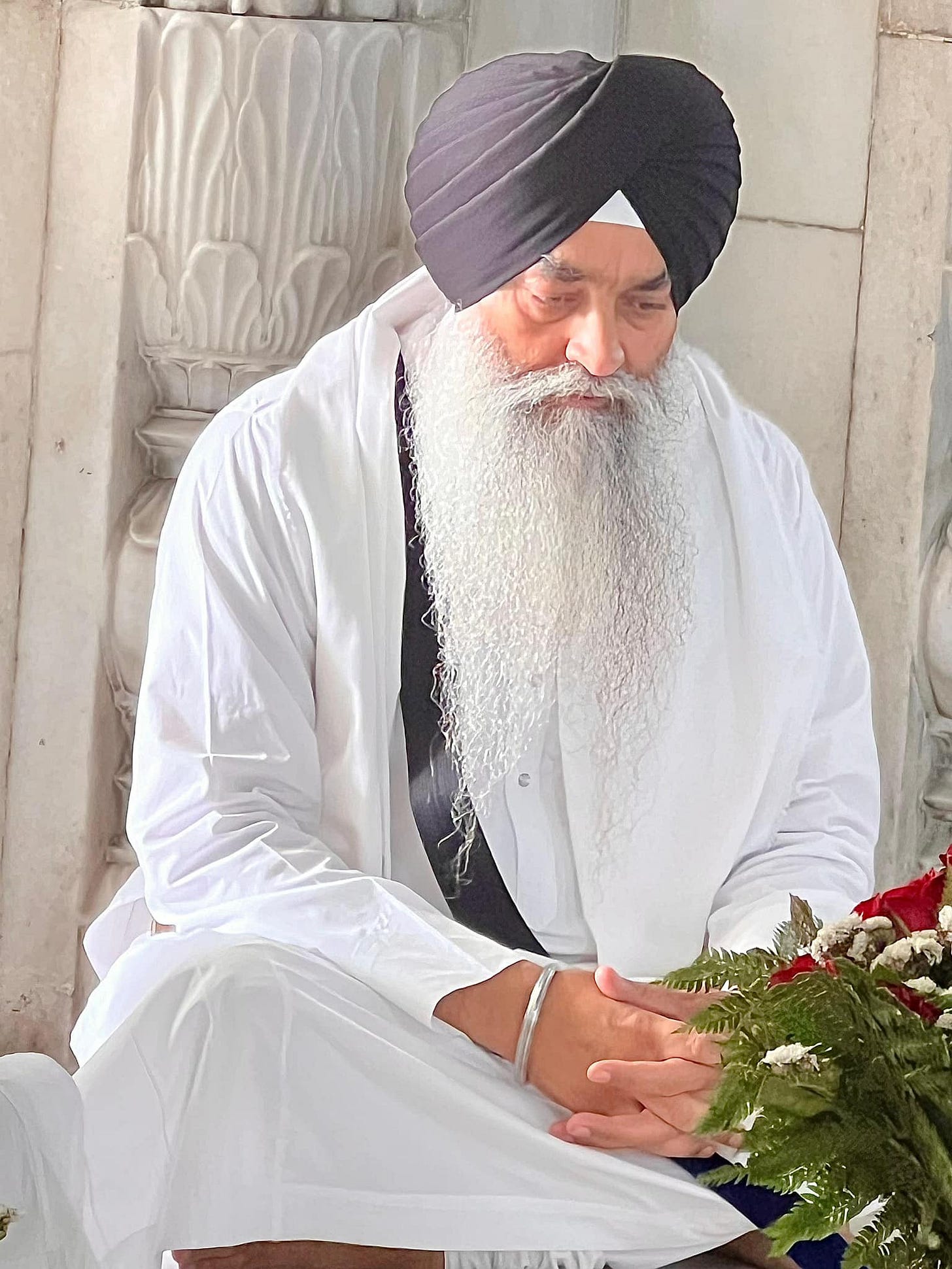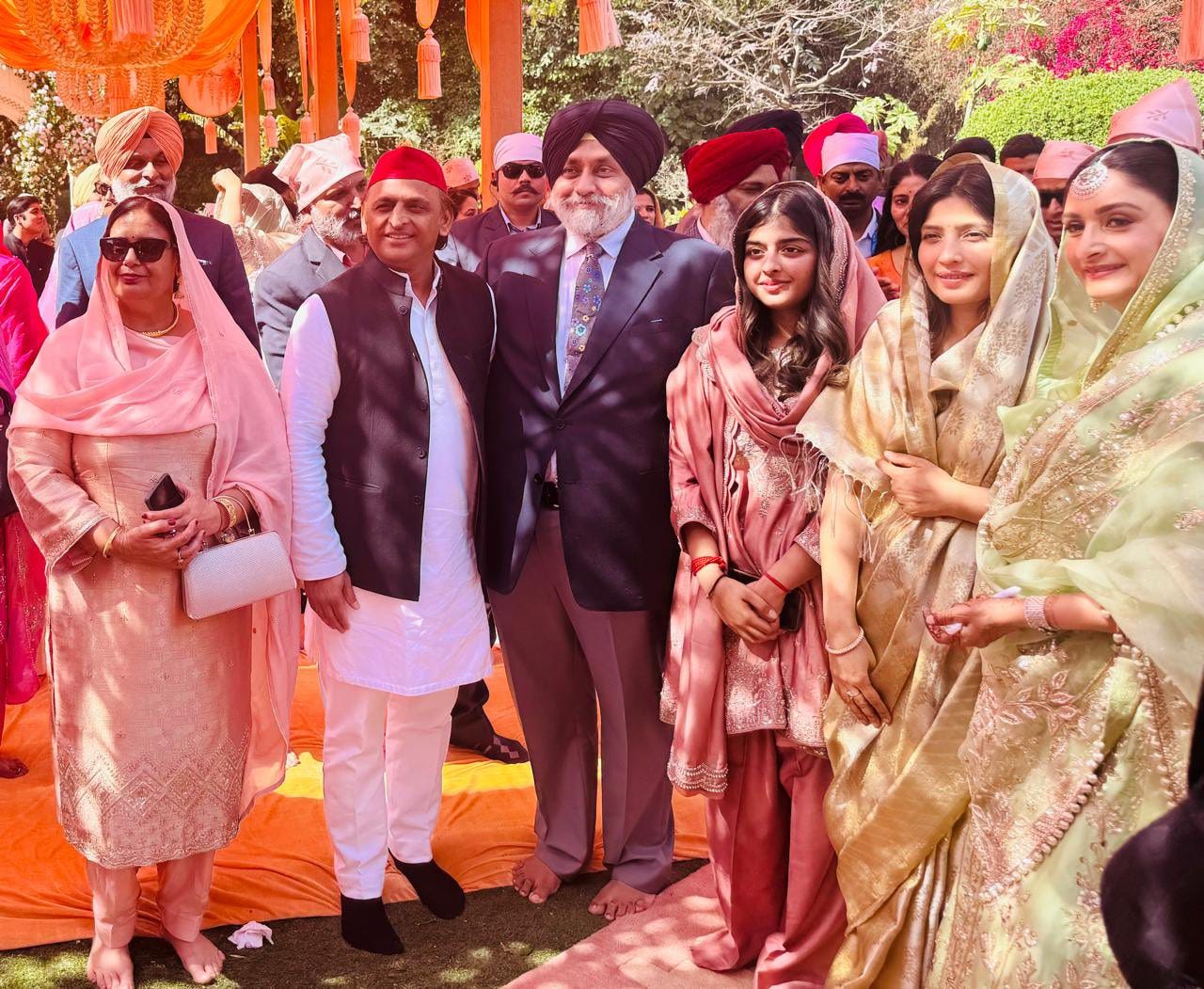Jathedar Raghbir Singh’s Bold Stand: Akal Takht, Giani Harpreet Singh, and the Point of Inflexion in Panthic Politics
The SGPC’s credibility, the future of SAD, and the balance of power within Sikh institutions now stand at a crossroads, with Jathedar Raghbir Singh’s statement potentially marking a defining moment.
Jathedar Akal Takht Unexpectedly Condemns the Removal of Giani Harpreet Singh
In an unexpected move, Jathedar Giani Raghbir Singh, Jathedar of Sri Akal Takht Sahib, has strongly condemned the removal of Giani Harpreet Singh, the former Jathedar of Takht Sri Damdama Sahib. His statement, posted just a couple of hours ago on his Facebook page while he is on a tour of the UK, carries significant political implications for the Shiromani Akali Dal (SAD) as well as the Sikh Panthic politics. At a time when SAD is undergoing internal restructuring and striving to maintain control over Sikh institutions, this direct criticism from the highest religious authority in the Panth raises serious questions about the legitimacy of the decision of the Executive Committee of the SGPC and its impact on Sikh politics.
English Translation of the Statement
Guru-Pyare Khalsa Ji,
Waheguru Ji Ka Khalsa, Waheguru Ji Ki Fateh!
I have been observing the recent developments with great seriousness from all perspectives. These unfolding events have deeply saddened me. The reasons and the manner in which Singh Sahib Giani Harpreet Singh was removed from his position as Jathedar of Takht Sri Damdama Sahib are entirely unjustified.
Since the decision made on December 2, 2024, at Sri Akal Takht Sahib, in light of Panthic sentiments and traditions, it seemed evident that a systematic effort was being made to create an unfavorable environment against Singh Sahib. A media trial was conducted against Singh Sahib Giani Harpreet Singh by deliberately misrepresenting an 18-year-old family matter.
As Jathedar of Sri Akal Takht Sahib, I had already stated, at the time when the Shiromani Committee formed an inquiry panel, that this was inappropriate. If there is ever a need to investigate allegations against any Jathedar of a Takht Sahib, only Sri Akal Takht Sahib has the authority to conduct such an inquiry. Despite this, Singh Sahib Giani Harpreet Singh was removed from his position, which is extremely unfortunate.
To humiliate and dismiss a Jathedar Sahib in this manner is deeply regrettable. Once again, I wish to state from my conscience that the removal of Singh Sahib Giani Harpreet Singh is highly condemnable and an unfortunate act, which also threatens the independent identity and existence of the Takht Sahiban.
Guru Rakha.
Giani Raghbir Singh
Jathedar, Sri Akal Takht Sahib
#GianiHarpreetSingh #AkalTakhtSahib #GianiRaghbirSinghJi #SGPCSriAmritsar #SGPCPresident #SukhbirBadal #AkaliDal #ViralNews #Viral
A Statement That Deepens the Crisis: Implications for Akali Politics
While Giani Harpreet Singh had issued sharply worded public statements (short video) after his removal, the statement of Jathedar Giani Raghbir Singh—known for his mild demeanor—adds an unexpected dimension to the controversy. His remarks do more than just express discontent; they expose deep fissures within the Sikh religious and political framework. By openly challenging the removal of Giani Harpreet Singh, he has intensified the ongoing debate over SAD’s influence on Sikh institutions. This development is likely to have far-reaching consequences, not only for the SGPC’s credibility but also for SAD’s political standing. Below are the key takeaways from this unfolding crisis.
1. Legitimacy Crisis for SAD’s Control Over SGPC
Jathedar Raghbir Singh’s public disapproval of the SGPC's handling of Giani Harpreet Singh’s removal exposes a growing divide within Sikh religious leadership and SAD-backed SGPC. The SGPC leadership, which functions as SAD’s institutional backbone, is now being openly questioned by none other than the highest religious authority within the Sikh Panth, Sri Akal Takht Sahib. This weakens SAD’s long-standing claim of being the natural custodian of Sikh interests.
2. Strengthening the Narrative Against SAD’s Political Influence Over SGPC
One of the major criticisms against SAD in recent years has been its alleged misuse of the SGPC for political gains. Jathedar Raghbir Singh’s statement bolsters the argument that SAD is manipulating Sikh religious institutions for its survival. This could further fuel calls for an independent SGPC, free from political interference, thereby weakening SAD’s institutional hold.
3. Mobilization of Opposition Within Panthic Circles
By framing the removal of Giani Harpreet Singh as an attack on the independence of Sikh institutions, the statement has the potential to unite disparate Panthic groups against SAD. Dissenting factions, including former SAD leaders, ex-SGPC members, and independent Sikh organizations, may use this as a rallying point to push for reforms in the SGPC and demand greater transparency in its functioning.
4. Weakening of Sukhbir Badal’s Authority
The controversy adds another layer to the internal dissent within SAD. Sukhbir Badal has been trying to project a reformist image for SAD following electoral defeats, but this episode exposes the contradictions in his leadership. His perceived role in the removal of Giani Harpreet Singh could alienate traditional SAD supporters, particularly the more religiously inclined sections of the Sikh community.
5. Potential Impact on Upcoming SGPC Elections
SGPC elections, whenever held, could become a battleground where this controversy plays a key role. If SAD continues to face backlash over this decision, rival Panthic groups and independent candidates may find stronger ground to challenge its dominance. This could lead to either a fractured mandate or the emergence of an alternative leadership within SGPC.
6. A Boost for the ‘Miri-Piri Sewa Dal’ Concept
The Miri-Piri Sewa Dal initiative, which seeks to influence the SGPC elections and restore Panthic integrity, could gain traction from this episode. If Giani Harpreet Singh and his supporters strategically leverage this crisis, they might consolidate a broader anti-SAD front in the religious-political sphere.
7. Impact on Zila Parishad & Panchayat Samiti Elections
An additional implication of this controversy is its potential impact on the upcoming Zila Parishad & Panchayat Samiti elections in Punjab, scheduled by May 31, 2025. Rural Punjab has traditionally been an SAD stronghold, but its weakening grip over Sikh institutions, as evident in the backlash against Giani Harpreet Singh’s removal, could alienate core Panthic voters. If this perception gains traction, SAD may struggle to mobilize support at the grassroots level in rural areas, its traditional constituency, allowing opposition parties and independent Panthic factions to consolidate their position. These elections will serve as a litmus test—not just for SAD’s rural revival, but also for the extent to which SGPC-linked politics continues to influence voter sentiment in Punjab's villages.
8. Broader Electoral Ramifications for SAD in Punjab
SAD is already struggling with declining electoral support in Punjab, and this controversy could further erode its base among devout Sikh voters. The perception that SAD is mishandling religious affairs may push more traditional voters toward alternative parties, such as the BJP (which is making overtures to Sikh voters), or newly emerging Panthic groups.
In Summary: A Point of Inflexion in Sikh Religious-Political Dynamics
The latest statement by Jathedar Giani Raghbir Singh, condemning the removal of Giani Harpreet Singh, has dealt a severe blow to the credibility of the Shiromani Akali Dal (SAD), including its leadership, and further exposed its interference in Sikh institutions. His unequivocal stance has not only validated concerns about the politicization of SGPC affairs but has also provided fresh momentum to voices demanding institutional independence from SAD’s control.
While SAD still commands the SGPC, Jathedar Raghbir Singh’s remarks have undermined its moral authority, reinforcing the perception that the party prioritizes political gains over Panthic interests. This growing discontent could fuel a broader movement for reforms, challenging SAD’s historic grip over Sikh religious affairs.
The timing of this crisis is particularly significant. SAD has scheduled the election of its new President on March 1, even as its controversial membership drive continues to face internal dissent. Simultaneously, the deadline for claims and objections regarding SGPC electoral rolls ends on March 10, 2025, setting the stage for imminent SGPC elections. With both SAD’s internal leadership battle and the future control of SGPC now unfolding in parallel, Jathedar Raghbir Singh’s intervention could reshape the political landscape within Sikh institutions, influencing voter sentiment and strengthening calls for independent leadership.
If unchecked, the crisis could trigger a realignment in Panthic politics, with alternative forces emerging to challenge SAD’s monopoly over Sikh religious affairs. The SGPC’s credibility, the future of SAD, and the balance of power within Sikh institutions now stand at a crossroads, with Jathedar Raghbir Singh’s statement potentially marking a defining moment in Sikh politics—just as the battle for SGPC and SAD’s leadership intensifies.



